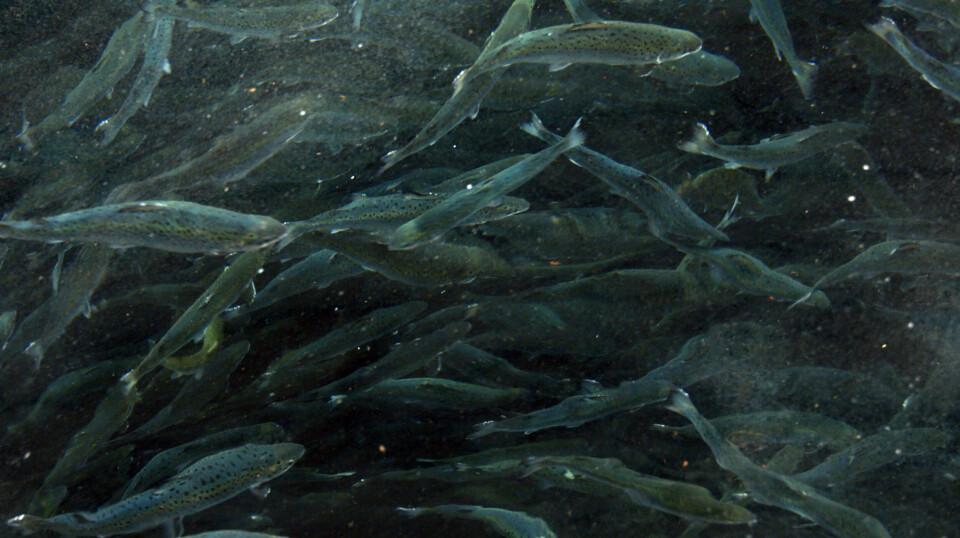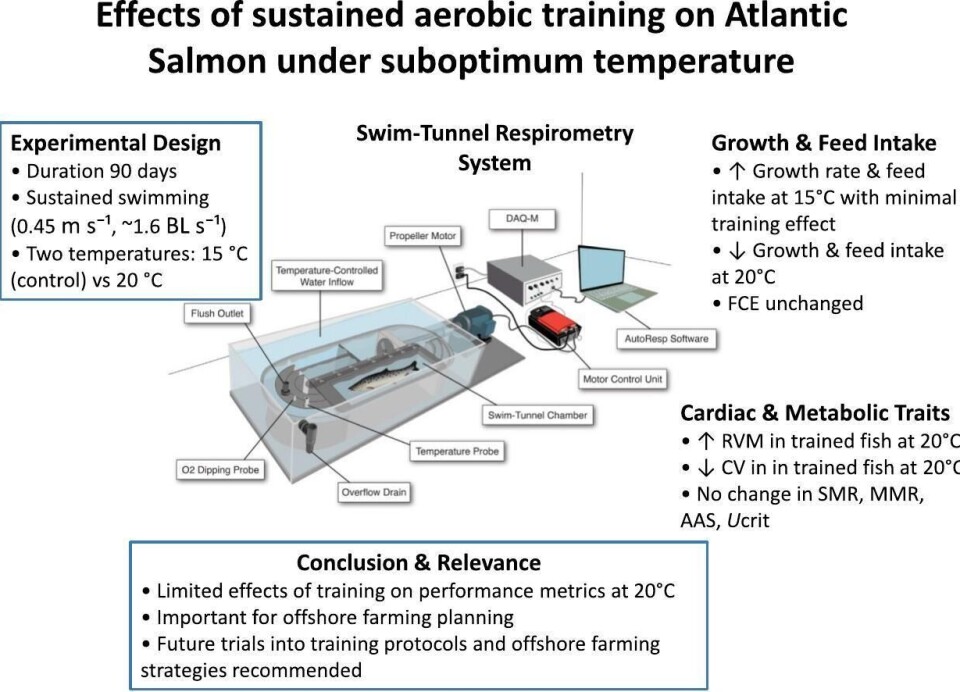
How salmon training is affected by suboptimal temperatures
What is the impact of prolonged, sustained aerobic exercise at suboptimal, elevated temperatures on the heart, aerobic performance, and growth of Atlantic salmon?
Scientists from two Australian research institutes wanted to find out.
Sustained aerobic exercise is thought to improve cardiac function and growth in farmed salmonids, but the effects under suboptimal, elevated temperatures remain unclear.
A study published in "Comparative Biochemistry and Physiology" aimed to investigate whether continuous training at different temperatures could improve growth and whether it affected cardiac function at a suboptimal, elevated temperature in a context relevant to offshore aquaculture.
Method
Post-smolt Atlantic salmon were reared for 90 days at 15°C (control temperature) and 20°C (suboptimal, elevated temperature), either with continuous aerobic swimming (trained: 0.45 m/s) or under standard conditions (untrained: 0.18 m/s).
Growth and feed intake were assessed at both temperatures, while cardiac and metabolic parameters were only measured at 20°C.
Results
At 15°C, the trained fish showed increased feed intake, but this did not lead to improved growth. At 20°C, training did not lead to increased feed intake or growth.
Respirometry in a swim tunnel at 20°C revealed no significant differences in aerobic performance between trained and untrained fish, although the trained fish showed lower individual variation in metabolic and swimming parameters.

“Although training increased relative ventricular mass (RVM), indicating potential cardiac remodelling, this did not lead to improved metabolic performance,” the researchers write.
“These findings emphasise how complex physiological responses to exercise and temperature can be in salmon farming,” they add.
Although continuous aerobic training led to minor cardiac adaptations, the effect on growth and performance was limited, especially at suboptimal, elevated temperatures.
“This research provides valuable insight into how Atlantic salmon may respond to offshore farming environments, with particular relevance to the aquaculture industry in Tasmania,” the scientists say.